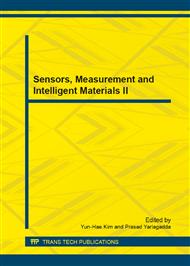p.370
p.374
p.379
p.383
p.388
p.394
p.401
p.405
p.411
Study on Characteristic Parameters of Speech Anti-Deliberate Imitation System
Abstract:
Deliberate imitation which is the reproduction of another speakers voice and speech behavior can pose a threat to the security of the voice authentication system. Therefore effective characteristic parameters are the key to the anti-deliberate imitation. The study chose speech database of anti-deliberate imitation and investigated some common feature parameters separating capacity and descriptive power against voice deliberate imitation. The study compared the ranking of subjective evaluation and feature parameters Euclidean distance of imitators. The comparison results indicate that Mel frequency cepstrum coefficient (MFCC) combined with its differential cepstrum parameters (WMFCC) have the best performance for anti-deliberate imitation. And the results were validated by the experiment based on VQ speaker verification system.
Info:
Periodical:
Pages:
388-393
Citation:
Online since:
December 2013
Authors:
Price:
Сopyright:
© 2014 Trans Tech Publications Ltd. All Rights Reserved
Share:
Citation:


